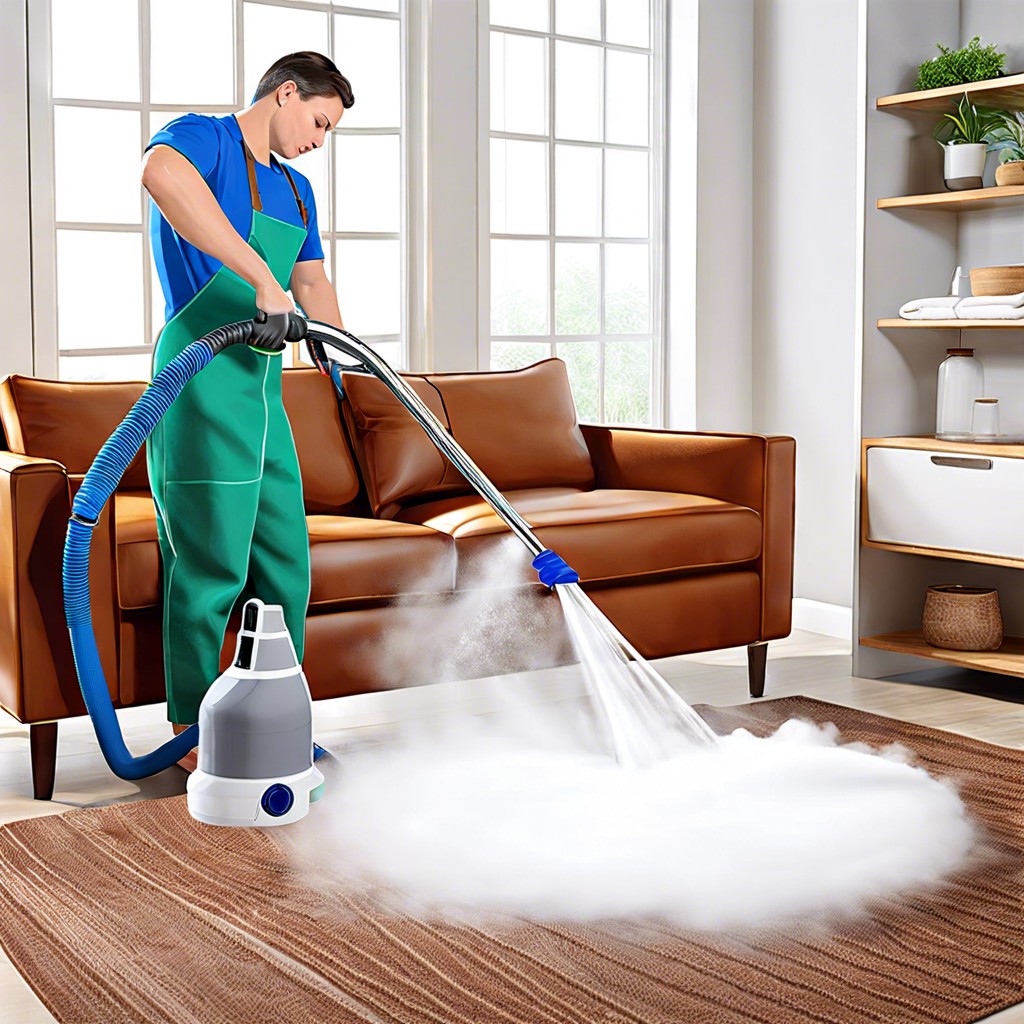Last updated on
Learn how to effectively identify and eradicate bed bugs from your couch with these practical steps.
Key takeaways:
- Bed bugs are small insects that feed on blood.
- Signs of a bedbug infestation in furniture include bites, dark spots, eggs, live bugs, and an unpleasant odor.
- To check and treat bed bugs in couches, inspect and clean crevices, use a vacuum and steam cleaner, and consider professional pest control.
- Bed bugs can infest other types of furniture, such as bedroom furniture, office chairs, wooden furniture, dressers, and bookshelves.
- Pest control services offer effective treatment options and preventative measures for bed bug infestations.
Table of Contents
What Are Bed Bugs?
Bed bugs are small, elusive insects that thrive on the blood of humans or animals. They are often a rusty red or mahogany color and measure about 4-5 millimeters in length, roughly the size of an apple seed, which enables them to hide easily in tight crevices.
While predominantly nocturnal, bed bugs can adapt their feeding habits to the sleeping patterns of their hosts. After feeding, their bodies become swollen and reddish in color.
Lifecycle stages include the egg, five immature nymph stages, and the mature adult. They can survive months without feeding, making them persistent pests once established. Their inability to fly is compensated by their hitchhiking prowess, traveling effortlessly on luggage, clothing, or furniture to new environments.
Signs of a Bedbug Infestation in Furniture
Detecting bed bugs in furniture often requires a keen eye. Look for these telltale signs:
- Bites on Skin: If you wake up with itchy areas you didn’t have when you went to sleep, it might be bed bugs, especially if your couch doubles as a sleeping area.
- Dark or Rusty Spots: Check for small, dark spots (about the size of a period), which could be bed bug excrement on upholstery or surrounding areas.
- Eggs and Shed Skins: Tiny, pale yellow skins that nymphs shed as they grow larger, along with the eggs, may be found in crevices of a couch.
- Live Bed Bugs: Although small and elusive, you might see live bugs nestled in the nooks and crannies of your furniture.
- Unpleasant Odor: A strong, musty odor from the bugs’ scent glands may be noticeable if the infestation is large.
Regular inspection and maintenance of furniture can prevent an infestation from taking hold or identify an issue early on, making it easier to address.
How to Check for and Treat Bed Bugs in Upholstered and Leather Couches
Initiate your inspection by removing all cushions and examining their seams, as bed bugs commonly reside within these crevices. Utilize a flashlight to enhance visibility during your search. Look for tiny, dark staining – a sign of bed bug excrement – along with the bugs themselves, which resemble apple seeds in shape and color.
For upholstered couches, consider using a stiff brush along seams and around edges to dislodge any hidden bugs or eggs. A vacuum cleaner with a hose attachment can suck up any bed bugs unveiled during brushing; however, remember to immediately dispose of the vacuum bag in an outdoor trash bin.
In the case of leather couches, meticulously inspect all folds and crevices. The smoother surfaces may make bed bugs more visible than on an upholstered couch, though they can still hide in small spaces or under labels and tags.
After manual inspection and cleaning, steam cleaning is a highly effective treatment option, as the high temperatures can kill both bed bugs and their eggs. Make sure the steam cleaner is safe for use on your specific couch material.
In situations with significant infestations, or if these methods do not fully resolve the issue, professional pest control is recommended. They will employ a range of treatments, potentially including insecticides specifically labeled for use against bed bugs, applied according to the product’s directions for safety and effectiveness.
Can Bed Bugs Live in and Infest Other Types of Furniture?
Bed bugs are not exclusive to couches; they can take up residence in various household furnishings. They prefer any spot that is close to where humans rest, as this allows for easy access to their food source: blood.
- Bedroom furniture, such as bed frames, mattresses, and nightstands, are common habitats due to their proximity to sleeping humans.
- In the office, they might hide in desk chairs or lounge seating, especially in shared spaces like dorms or waiting rooms.
- Wooden furniture is not immune; bed bugs can burrow into cracks and crevices within the structure.
- Dressers and wardrobes can also harbor these pests among clothes and linen, often undetected.
- Bookshelves and wall units provide secluded corners for bed bugs to thrive, especially behind books and decor items.
Regular inspections and maintenance of all furniture, not just couches, are essential in preventing and controlling infestations.
Bed Bug Pest Control Services
When tackling a bed bug infestation, pest control services provide a professional approach that’s often the most effective and time-efficient. These specialists employ a range of methods, tailored to the severity of the infestation and the type of furniture affected.
Treatment options include heat treatments, which raise the temperature to a level that eliminates bed bugs at all life stages, or chemical treatments, which involve insecticides specifically designed to target bed bugs.
Preventative measures can also be offered by pest control services, such as mattress encasements and regular monitoring, to keep these pests at bay.
It’s important to discuss the safety and duration of these treatments, as well as any preparation and follow-up required to ensure complete eradication. Remember, a reputable pest control service will always offer an inspection and provide a treatment plan suited to your specific situation.




